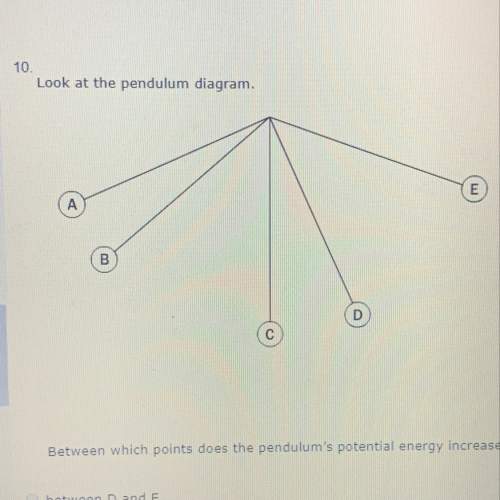
Physics, 21.07.2019 22:30 jetblackcap
Describe how you would show j. j. thomson’s model of the atom using small beads and clay

Answers: 1


Another question on Physics

Physics, 21.06.2019 22:00
The midpoints? a, b, and c are marked on the histogram. match them to the indicated scores. which? scores, if? any, would be considered? unusual?
Answers: 2

Physics, 21.06.2019 23:50
Select the correct answer from each drop-down menu. compared to its surroundings, the concentration of solutes is low inside a cell. so, the cell is with respect to its surroundings. a particular solute in this cell uses energy for its transport from the cell to its surroundings. this type of transport is called
Answers: 3

Physics, 22.06.2019 01:30
In a thunderstorm, charge builds up on the water droplets or ice crystals in a cloud. thus, the charge can be considered to be distributed uniformly throughout the cloud. for the purposes of this problem, take the cloud to be a sphere of diameter 1.00 kilometer. the point of this problem is to estimate the maximum amount of charge that this cloud can contain, assuming that the charge builds up until the electric field at the surface of the cloud reaches the value at which the surrounding air breaks down. this breakdown means that the air becomes highly ionized, enabling it to conduct the charge from the cloud to the ground or another nearby cloud. the ionized air will then emit light due to the recombination of the electrons and atoms to form excited molecules that radiate light. in addition, the large current will heat up the air, resulting in its rapid expansion. these two phenomena account for the appearance of lightning and the sound of thunder. take the breakdown electric field of air to be eb=3.00ă—106n/c. part a estimate the total charge q on the cloud when the breakdown of the surrounding air is reached. express your answer numerically, to three significant figures, using ďµ0=8.85ă—10â’12c2/(nâ‹…m2) .
Answers: 2

Physics, 22.06.2019 08:30
If an astronaut takes an object to the moon the following is true (choose only one). a the mass will change but the weight will be the same. b both the mass and the weight of the object will be the same. c the weight will change but the mass will be the same. d both the mass and the weight of the object will change.
Answers: 1
You know the right answer?
Describe how you would show j. j. thomson’s model of the atom using small beads and clay...
Questions




History, 03.03.2021 21:30



Advanced Placement (AP), 03.03.2021 21:30


History, 03.03.2021 21:30


History, 03.03.2021 21:30




History, 03.03.2021 21:30



Chemistry, 03.03.2021 21:30

Mathematics, 03.03.2021 21:30

Medicine, 03.03.2021 21:30




